Slipped Disc
This occurs when a part of the central softer part of the vertebral disc bulge or escape out through a weakness or break in the outer part of the disc. A slipped disc is sometimes called a herniated disc. The bulging disc may press on nearby structures such as a nerve coming from the spinal cord. Some inflammation also develops around the slipped part of the disc. Most Slip discs occur in the lower back of the spine. The size of the slipped part can vary. As a rule, the larger the bulge, the more severe the pain is likely to be.
Who is more vulnerable?
Less than 1 in 20 cases of back pain are due to a slipped disc. Most cases of back pain are simple low back pain. Anyone is vulnerable for slip disc, but a person engaged in heavy lifting, history of sudden back injury or weak back muscle due to malnourishment are more prone to get slipped disc.The most common age to develop a slipped disc is between 30 and 50 years and men are more affected than women.
Cause
It seems that some people may have a weakness in the outer part of the affected disc. Various things may trigger the inner softer part of the disc to bulge out through the weakened or broken outer part of the disc. For eg. Awkward bending, or heavy lifting in an awkward position may cause some extra pressure on the disc. In people with a weakness in a disc, this may be sufficient to cause a bulge. Factors that may increase the risk of developing a prolapsed disc include: a job involving lots of lifting, a job involving lots of sitting (eg. driving), weight-bearing sports (weight lifting, etc), smoking, obesity, and a disc is more likely to develop a weakness with increasing age.
Complaints
1) Back pain
The pain is often sudden and severe. The pain usually eases by lying down flat, and is often made worse if one move his/her back, cough, or sneeze.
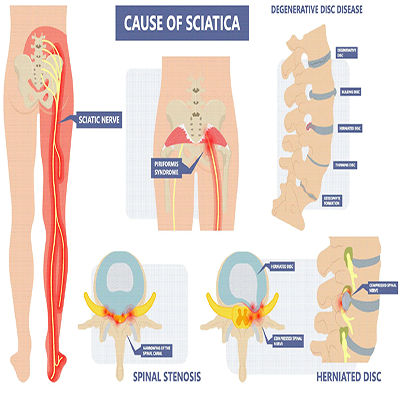 2) Sciatica:
2) Sciatica:
Sciatica is the pain that occurs because a nerve coming from the spinal cord is pressed on (trapped) by a prolapsed disc, or is irritated by the inflammation caused by the prolapsed disc. Although the problem is in the back, you feel pain along the course of the nerve in addition to back pain. Therefore, you may feel pain down a leg to the calf or foot. Sciatic pain can range from mild to severe, but it is often worse than the back pain. With a prolapsed disc, the sciatic nerve is the most commonly affected nerve. The sciatic nerve is a large nerve that is made up from several smaller nerves that come out from the spinal cord in the lower back. It travels deep inside the buttock and down the back of the leg. There is a sciatic nerve for each leg.
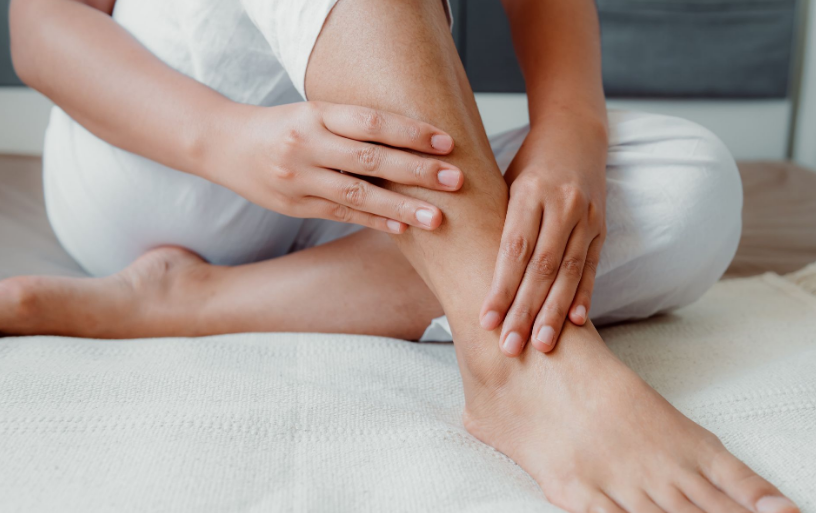 3) Tingling and Numbness
3) Tingling and Numbness
The irritation or pressure on the nerve next to the disc may also cause pins and needles, numbness or weakness in part of a buttock, leg or foot. The exact area and type of symptoms depend on which nerve is affected.
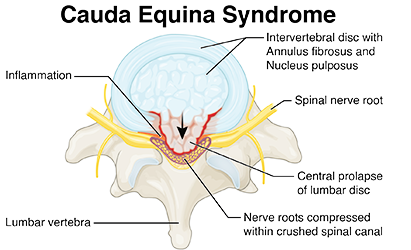 4) Cauda equina syndrome
4) Cauda equina syndrome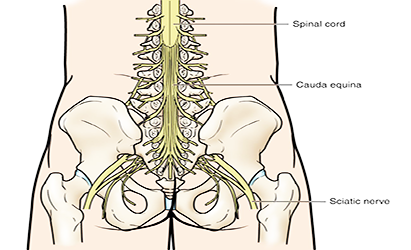
This is a rare disorder where the nerves at the very bottom of the spinal cord are pressed on. This syndrome can cause low back pain plus: problems with bowel and bladder function like inability to pass urine, numbness around the anal area, and weakness in one or both legs. This syndrome needs urgent treatment to preserve the nerves to the bladder and bowel from becoming permanently damaged.
Management of slipped disc and sciatica pain
 1) Exercise
1) Exercise
Back strengthening exercises and certain Yoga postures has been found to be useful in mild slipped disc. Continue with normal activities as far as possible. Don’t do anything that causes a lot of pain. However, you will have to accept some discomfort when you are trying to keep active.
2) Medication:
Please DO NOT SELF MEDICATE beyond few days of oral Paracetamol. If you take them regularly the pain is more likely to be ease for much of the time and enable you to exercise and keep active. Paracetamol is often sufficient if you take it regularly at full strength. Anti-inflammatory painkillers such as Ibuprofen and diclofenac and others are also helpful in reducing pain, but should be taken under medical supervision. Some people with asthma, high blood pressure, kidney failure, or heart failure may not be suitable for such drugs. Stronger or higher painkiller such as codeine, naproxen, tramadol, etc are optional if anti-inflammatories do not suit or do not work well. Codeine is often taken in addition to paracetamol. Constipation is a common side-effect from stronger pain killers. This may make your back pain worse if you need to strain while you pass toilet. To prevent constipation, have lots to drink and eat fiber rich diet. Muscle relaxant such as diazepam is sometimes prescribed for a few days if the back muscles become very tense and make the pain worse.
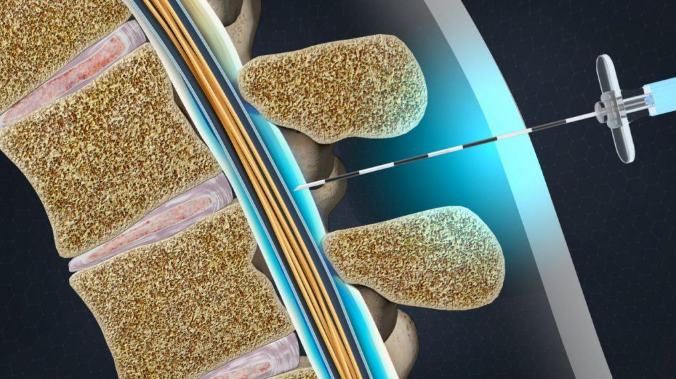 3) Spinal Epidural Injections
3) Spinal Epidural Injections
Depending on the site and severity of the pain, Lumbar Inter-laminar Epidural Injections and Trans-foraminal injection can be given to alleviate pain. These injections reduce the redness and swelling of the spinal nerve roots, thereby decreasing pain, tingling and numbness.
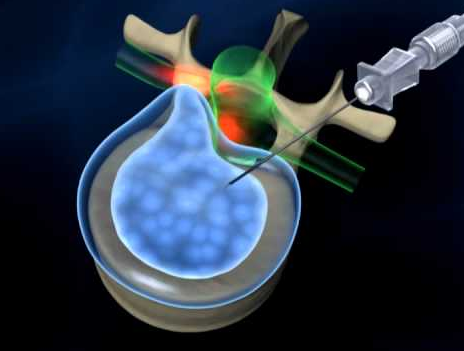 4) Ozone Discectomy
4) Ozone Discectomy
injection of Ozone-Oxygen mixture into the affected disc is a new alternative method of treating patients suffering from Sciatica caused by slipped disc.
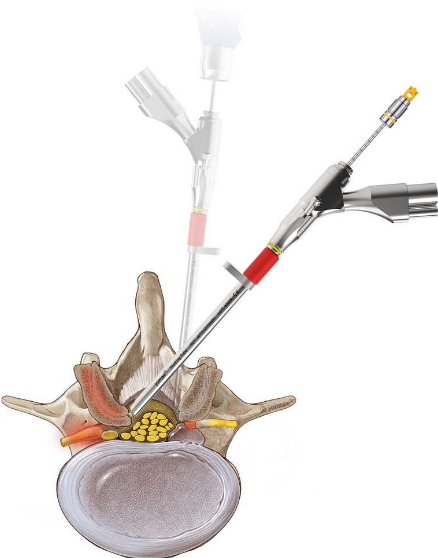 5) Endoscopic Microdiscectomy
5) Endoscopic Microdiscectomy
The bulged disc is removed via a single small hole surgery in the back under local anesthesia using endoscopic equipments. Such treatment is needed in-case of large bulge or pain not responding to the above measures. Stronger or higher painkiller such as codeine, naproxen, tramadol, etc are optional if anti-inflammatories do not suit or do not work well. Codeine is often taken in addition to paracetamol. Constipation is a common side-effect from stronger pain killers. This may make your back pain worse if you need to strain while you pass toilet. To prevent constipation, have lots to drink and eat fiber rich diet. Muscle relaxant such as diazepam is sometimes prescribed for a few days if the back muscles become very tense and make the pain worse.